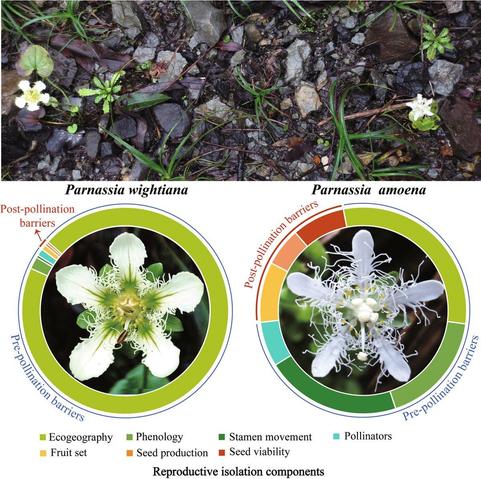For these two #sympatric Parnassia species, pre-pollination barriers play a more significant role in #reproductive isolation than post-#pollination barriers!
What does it all mean? Find out here!
https://doi.org/10.1111/jse.13184
@WileyEcolEvol
#PlantSci #JSE #flower #development #stamen #botany



